Mohamad Mestoukirdi
Sparser Random Networks Exist: Enforcing Communication-Efficient Federated Learning via Regularization
Sep 19, 2023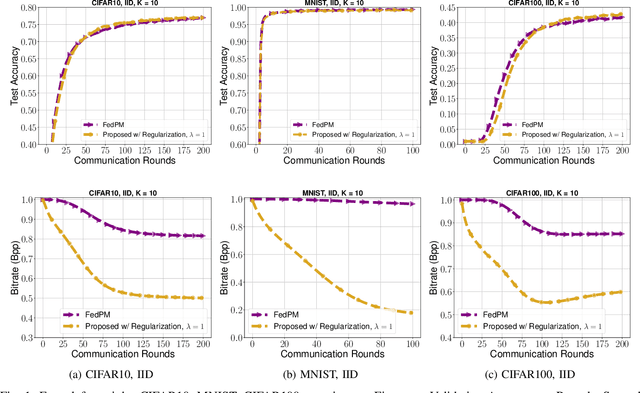
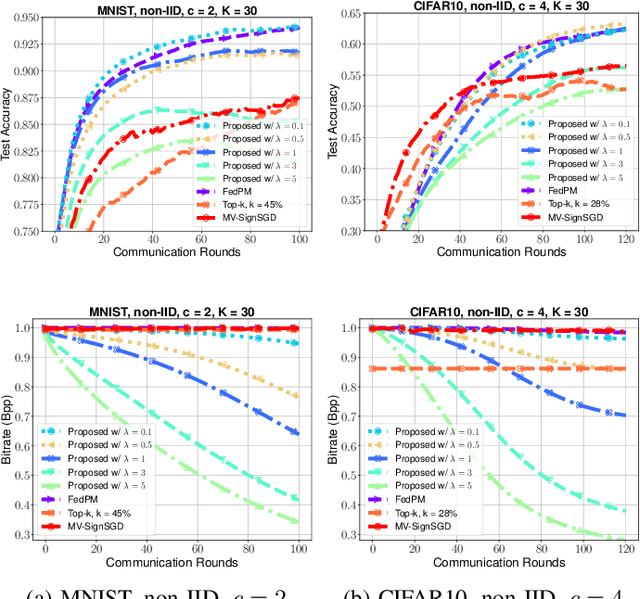
Abstract:This work presents a new method for enhancing communication efficiency in stochastic Federated Learning that trains over-parameterized random networks. In this setting, a binary mask is optimized instead of the model weights, which are kept fixed. The mask characterizes a sparse sub-network that is able to generalize as good as a smaller target network. Importantly, sparse binary masks are exchanged rather than the floating point weights in traditional federated learning, reducing communication cost to at most 1 bit per parameter. We show that previous state of the art stochastic methods fail to find the sparse networks that can reduce the communication and storage overhead using consistent loss objectives. To address this, we propose adding a regularization term to local objectives that encourages sparser solutions by eliminating redundant features across sub-networks. Extensive experiments demonstrate significant improvements in communication and memory efficiency of up to five magnitudes compared to the literature, with minimal performance degradation in validation accuracy in some instances.
User-Centric Federated Learning: Trading off Wireless Resources for Personalization
Apr 25, 2023Abstract:Statistical heterogeneity across clients in a Federated Learning (FL) system increases the algorithm convergence time and reduces the generalization performance, resulting in a large communication overhead in return for a poor model. To tackle the above problems without violating the privacy constraints that FL imposes, personalized FL methods have to couple statistically similar clients without directly accessing their data in order to guarantee a privacy-preserving transfer. In this work, we design user-centric aggregation rules at the parameter server (PS) that are based on readily available gradient information and are capable of producing personalized models for each FL client. The proposed aggregation rules are inspired by an upper bound of the weighted aggregate empirical risk minimizer. Secondly, we derive a communication-efficient variant based on user clustering which greatly enhances its applicability to communication-constrained systems. Our algorithm outperforms popular personalized FL baselines in terms of average accuracy, worst node performance, and training communication overhead.
UAV-Aided Multi-Community Federated Learning
Jun 04, 2022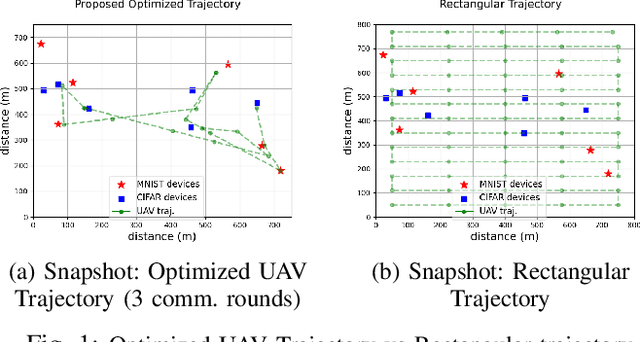
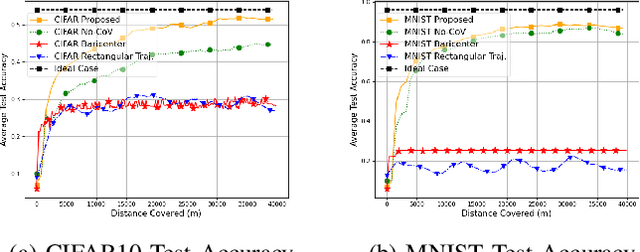
Abstract:In this work, we investigate the problem of an online trajectory design for an Unmanned Aerial Vehicle (UAV) in a Federated Learning (FL) setting where several different communities exist, each defined by a unique task to be learned. In this setting, spatially distributed devices belonging to each community collaboratively contribute towards training their community model via wireless links provided by the UAV. Accordingly, the UAV acts as a mobile orchestrator coordinating the transmissions and the learning schedule among the devices in each community, intending to accelerate the learning process of all tasks. We propose a heuristic metric as a proxy for the training performance of the different tasks. Capitalizing on this metric, a surrogate objective is defined which enables us to jointly optimize the UAV trajectory and the scheduling of the devices by employing convex optimization techniques and graph theory. The simulations illustrate the out-performance of our solution when compared to other handpicked static and mobile UAV deployment baselines.
User-Centric Federated Learning
Oct 19, 2021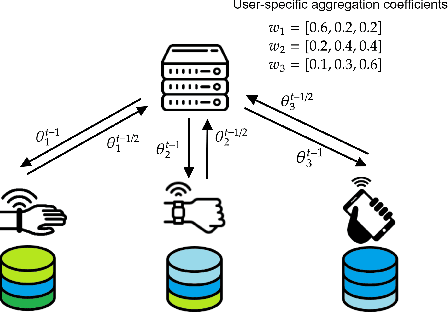
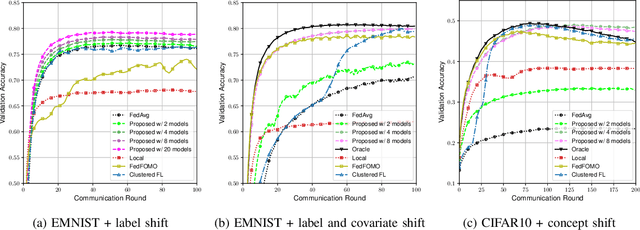
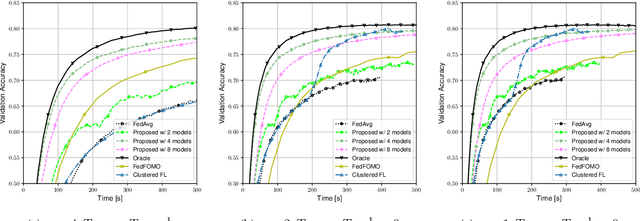

Abstract:Data heterogeneity across participating devices poses one of the main challenges in federated learning as it has been shown to greatly hamper its convergence time and generalization capabilities. In this work, we address this limitation by enabling personalization using multiple user-centric aggregation rules at the parameter server. Our approach potentially produces a personalized model for each user at the cost of some extra downlink communication overhead. To strike a trade-off between personalization and communication efficiency, we propose a broadcast protocol that limits the number of personalized streams while retaining the essential advantages of our learning scheme. Through simulation results, our approach is shown to enjoy higher personalization capabilities, faster convergence, and better communication efficiency compared to other competing baseline solutions.
 Add to Chrome
Add to Chrome Add to Firefox
Add to Firefox Add to Edge
Add to Edge